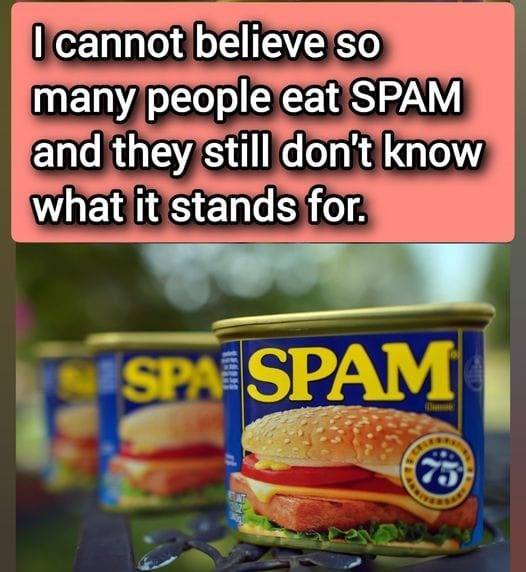ADVERTISEMENT
# **What is SPAM and What Is It Made of, Anyway?**
SPAM is one of those food items that seems to evoke strong reactions. Some people love it, others can’t stand the thought of it. Whether you’ve eaten it before or you’ve only heard about it, you’ve likely wondered: **What exactly is SPAM, and what is it made of?** Let’s dive into the mystery behind this iconic canned meat and uncover everything you need to know about it!
—
## **What Exactly is SPAM?**
SPAM is a brand of canned cooked meat that was first introduced by the **Hormel Foods Corporation** in 1937. It’s best known for its iconic rectangular can and its versatile, easy-to-prepare nature. While the name “SPAM” might sound a little strange, it’s actually a combination of two words: **”spiced”** and **”ham”**, giving you a hint about its flavor profile.
Originally created as an affordable, long-lasting meat product, SPAM quickly became a staple during times of war, when fresh meat was in short supply. Today, it’s still a beloved pantry item for many, especially in regions like **Hawaii**, **Asia**, and the **South Pacific**, where it has become part of local culinary traditions.
—
## **What Is SPAM Made Of?**
SPAM’s ingredients have been a subject of curiosity and, sometimes, skepticism. So, let’s break down exactly what goes into a can of SPAM:
1. **Pork (Ham)** – The primary ingredient in SPAM is **pork**. It’s made from a combination of **pork shoulder** and **pork ham**. The meat is finely ground to create a smooth, uniform texture that’s easy to slice and serve.
2. **Salt** – Salt is used to season the pork and also acts as a preservative to keep the product shelf-stable.
3. **Water** – Water is added to the meat mixture to give it moisture and create the right consistency.
4. **Potato Starch** – This ingredient is used as a binding agent to help hold the mixture together, giving SPAM its distinctive texture.
5. **Sugar** – A small amount of sugar is added to enhance the flavor and balance out the saltiness.
6. **Sodium Nitrite** – This is used as a preservative and to maintain the pink color of the meat, ensuring SPAM looks appealing even after being canned for extended periods.
—
## **How is SPAM Made?**
The process of making SPAM is fairly simple and has remained largely the same since its creation in the 1930s. Here’s a quick overview of how SPAM is produced:
1. **Grinding the Meat**: The pork shoulder and ham are ground into a fine paste.
2. **Mixing the Ingredients**: The ground meat is then mixed with water, salt, sugar, and sodium nitrite to form a smooth, even consistency.
3. **Canning**: The meat mixture is placed into cans, and the cans are sealed tightly.
4. **Cooking**: The sealed cans are heated and cooked at a high temperature, which ensures that the meat is fully cooked and sterilized. This process gives SPAM its long shelf life.
5. **Cooling and Storing**: Once cooked, the cans are cooled, and SPAM is ready to be shipped and sold, remaining safe to eat for years without refrigeration.
—
## **Is SPAM Healthy?**
While SPAM is undeniably convenient, many people question whether it’s a healthy food choice. Like many processed meats, SPAM is high in **sodium** and **fat**, so it’s important to enjoy it in moderation. Here’s a quick look at the nutrition:
– **Calories**: A serving of SPAM (2 oz) contains about 180 calories.
– **Fat**: It has about 16 grams of fat, with a significant amount being saturated fat.
– **Sodium**: SPAM is also quite high in sodium, with a single serving containing about 790 mg, which is about 34% of the daily recommended intake for an adult.
– **Protein**: SPAM is a good source of protein, with about 7 grams per serving.
If you’re looking for a low-fat or low-sodium option, SPAM may not be the healthiest choice. However, it can be enjoyed in moderation as part of a balanced diet, especially when paired with fresh vegetables or served as part of a larger meal.
For Complete Cooking STEPS Please Head On Over To Next Page Or Open button (>) and don’t forget to SHARE with your Facebook friends
ADVERTISEMENT
